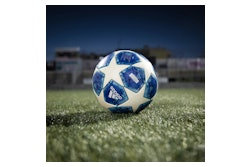Copyright 2018 The Buffalo News
All Rights Reserved
The Buffalo News (New York)
Lou Piccone remembers suffering concussions during his days with the Buffalo Bills.
So the 69-year-old retired wide receiver was surprised to learn that a team of University at Buffalo researchers found no signs of dementia-related, structural damage to his brain — despite his years playing professional football in 1970s.
So were the researchers.
After examining 21 retired Bills and Sabres players, including Piccone, the UB team has published a series of academic papers weighing in on CTE — a degenerative brain disease linked to sports such as football.
They say their evidence shows that, for some professional athletes, the risk of developing CTE is "not as great as once believed."
The UB team does not dispute the existence of CTE.
But the researchers, based on finding no evidence of early onset dementia in 21 former Bills and Sabres players, said they do not believe CTE is as dangerous as previously thought.
Early onset dementia is generally a precursor to CTE, according to the papers.
Barry S. Willer, a UB professor of psychiatry who was lead investigator and co-author of the papers, said he started his work at UB expecting to find high rates of early onset dementia among the Bills and Sabres players.
His expectations didn't pan out.
"We got caught up in the 'CTE wave.' It was, 'Oh, God, this is serious,' " Willer said.
The UB team acknowledged that 21 players was a "relatively small sample." But Willer said he was confident of the study's accuracy.
"A lot of (the athletes) had other issues, multiple orthopedic injuries, as you'd imagine," added John Leddy, a UB professor of orthopedics, at the news conference. "Some of them were in chronic pain, and taking pain medications. There was a lot of sleep disturbance."
In recent years, research on the damaging effects of CTE — and its connection to concussions — has sparked debate and has begun to reshape some of America's most popular sports.
Evidence of CTE, or chronic traumatic encephalopathy, has been found in the brains of dozens of dead athletes — including Tyler Hilinski, 21, a Washington State quarterback who committed suicide Jan. 16 after reportedly suffering several concussions.
The Bills and Sabres players who participated in UB's study were not named in the papers. The average age of the group was 56, and Bills players in the study were active on the football team for an average of 4.4 years.
Of the total 21 participants, eight of the athletes were former Bills, and 14 were Sabres.
In the study, there was a good range of athletes who played different positions in the NFL and NHL, said Mohammad Nadir Haider, a UB researcher. "A lot" of Bills linebackers participated, Haider said.
"News coverage has given the public the impression that CTE is inevitable among professional contact sport athletes," the researchers wrote. "The results of our comprehensive investigation ... do not support this notion."
Leddy, director of UB's Concussion Management Clinic, was also co-author of the papers, which will be published by the Journal of Head Trauma Rehabilitation.
The study was primarily funded by the Ralph C. Wilson Jr. Foundation, UB said. Wilson was the founder and owner of the Bills until he died in 2014. The foundation did not play a role in selecting the study's participants, according to UB. UB's research was also supported by the National Institutes of Health and the Robert Rick Family Foundation.
Leddy said other research from 2017 had similar results.
One study, conducted in 2017 by a Rutgers University researcher, found that 38 retired NHL athletes with an average age of 54 showed no evidence of dementia, Leddy said.
In another study completed last year by European researchers, of dozens of former professional rugby players, with an average age of 54, there were no signs of dementia, Leddy said. Those rugby athletes each had an average of about 14 concussions.
The UB research team compared brain health scans of the retired Bills and Sabres athletes to similar brain scans of a control group of 29 "age-matched," noncontact sport players, according to the papers.
Those noncontact players were primarily club swimmers, runners and triathletes, Willer said.
"Our noncontact sport control group turned out to be better educated and in much better health than our contact sport athletes," the researchers wrote, "but we discovered they were not substantially different in most aspects of functioning, except physical activity."
If former contact sport athletes do not display symptoms of early onset dementia, it's likely they "escaped the horror" of CTE, Willer and Leddy wrote in the papers.
And, based off the UB study, Willer and Leddy said they believe there's possibly a genetic trigger, or predisposition, that makes some athletes particularly prone to CTE.
"In time, people will begin to realize it's an important issue, CTE exists, but it's much more rare than we thought," Willer said.
Read More of Today's AB Headlines
Subscribe to Our Daily E-Newsletter
Terms and Conditions Privacy Policy































